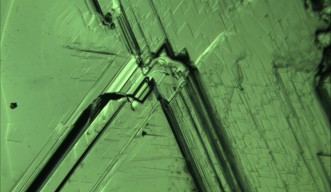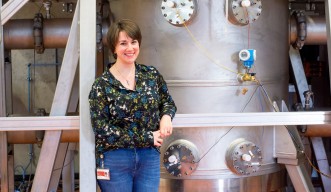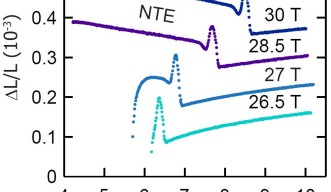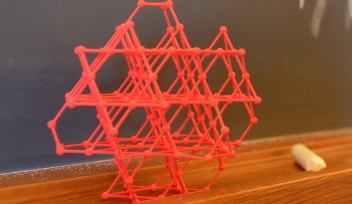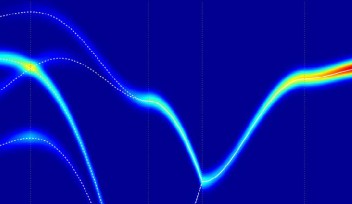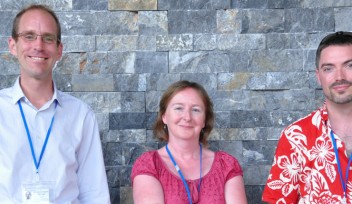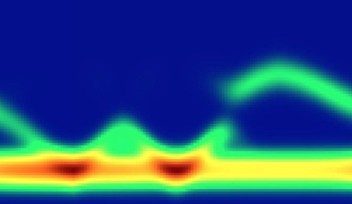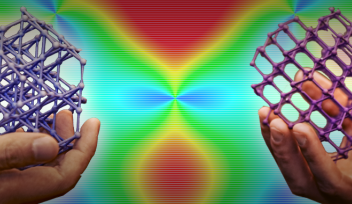Magnetic Crystal Expands as it Cools
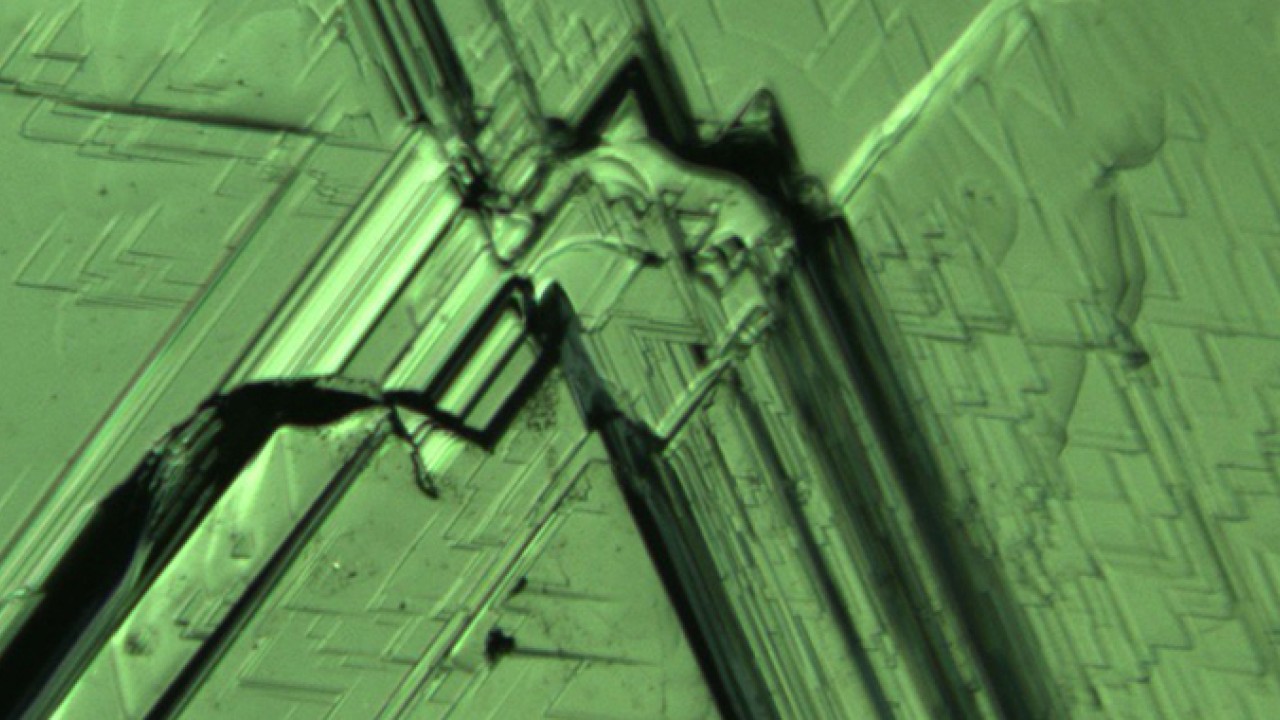
Materials usually expand when heated and contract when cooled, reflecting how energy is stored in atomic bonds. As part of an international effort, researchers at the Okinawa Institute of Science and Technology Graduate University (OIST) have found the key to a material that behaves in the opposite way — a property that could be exploited in future technologies.
Writing in Physical Review Letters, the team explains how the magnetic crystal CdCr₂O₄ expands as it cools — just like water when frozen as ice. In both substances, this behavior is driven by entropy, a measure of the number of ways that atoms in a material can arrange themselves.
CdCr₂O₄ is a spinel, a group of materials characterized by their crystal appearance and lattice structure. Because chromium (Cr) is magnetic, CdCr₂O₄ is known as a magnetic spinel.
“Magnetic spinels are mostly used as research playgrounds, but this uncommon property has technological relevance,” says Professor Nic Shannon, a lead author on the study.
“We now have a fundamental understanding of how this system works, which can act as a guide to help explore similar materials.”
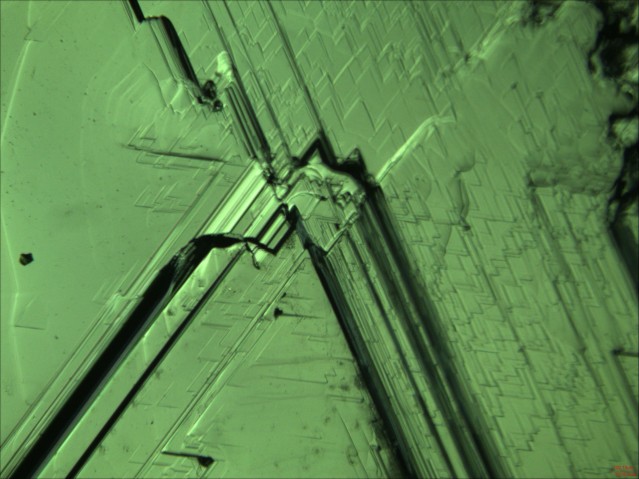
An attractive result
Most materials expand when heated and contract when cooled — an effect known as thermal expansion. The hotter the atoms in a material are, the more they move, and the more the bonds between them are stretched — making the material expand.
Only in a few rare cases, such as water ice and elastic bands, does a material display negative thermal expansion (NTE) — expanding as it is cooled.
New experiments on CdCr₂O₄ carried out by scientists at the High Field Magnet Laboratory reveal that this material also exhibits NTE under specific conditions — namely at low temperature and in the presence of a high magnetic field.
Creating these conditions is a huge effort, explains Dr. Ben Bryant, who led the experimental effort: “30 Tesla is a really high magnetic field — 3000 times as strong as the magnets in your fridge. We created this field using a giant electromagnet.”
“To keep the magnet cool we had to pump 140 liters of water through — that’s about a bathtub of water — every second. Meanwhile, we had to cool our sample to just 4 degrees above absolute zero.”

Entropy reigns supreme
The team writes how the structure of CdCr₂O₄ explains its NTE. Chromium (Cr) ions are magnetic — they have north and south poles, like more familiar iron magnets. But unlike iron, these ions have no magnetic effect outside the material. They do, however, have an effect on internal structure.
The chromium ions form a lattice, an interlaced pattern of magnetic ions separated by other atoms. Each magnetic ion feels the effect of its neighbors, which influence the way its magnetic moment, or spin, is oriented.
However, the magnetism of CdCr₂O₄ is said to be “frustrated” since these interactions do not, by themselves, cause the spins to order. Instead, the ions force the structure of the lattice into a shape that satisfies their magnetic needs, an effect known as order by distortion.
The key to understanding the NTE in CdCr₂O₄ lies in the way heat is stored in the fluctuations of spins, and how this links to the lattice. In CdCr₂O₄, these fluctuations are very effective at absorbing heat because of the frustrated interactions. The fluctuations, in turn, shorten the bonds between chromium ions, leading the material to contract as it is heated.
Collectively, this phenomenon can be understood using the concept of entropy.
“Entropy is a measure of a system’s informational content,” explains Shannon. “Here, it is linked to fluctuations in the spin of chromium ions.”
“It is this local flopping of chromium ions that explains the material’s negative thermal expansion.”
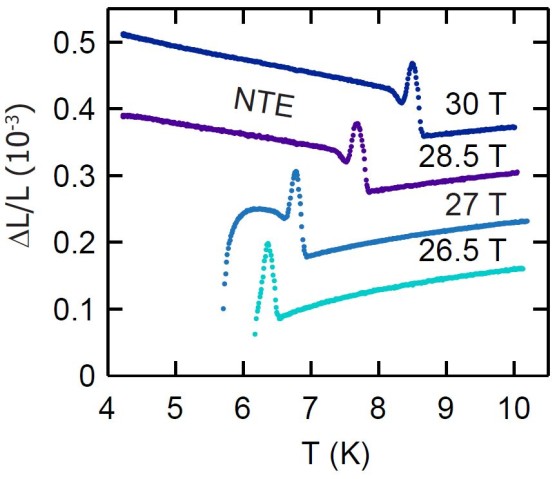
The finding provides one of the most comprehensive explanations for negative thermal expansion to date. Understanding how this system works is useful in guiding research, as scientists have a sense of what to look for in other frustrated materials. The unusual property of NTE can also be used to engineer scientific instruments and medical applications.
This research was a collaboration involving several institutions. Theoretical work was completed at the Okinawa Institute of Science and Technology Graduate University (OIST), the Hungarian Academy of Sciences, and the University of Tokyo. Experimental work was carried out using the facilities at the High Field Magnet Laboratory (HFML), with samples provided by the University of Kyoto.
Specialties
Research Unit
For press enquiries:
Press Inquiry Form










